|
The
|
||
THE BURGENLAND BUNCH NEWS - No. 333 July 31, 2022, © 2022 by The Burgenland Bunch All rights reserved. Permission to copy excerpts granted if credit is provided. Editor: Thomas Steichen (email: tj.steichen@comcast.net) BB Home Page: the-burgenland-bunch.org BB Newsletter Archives: BB Newsletters BB Facebook Page: TheBurgenlandBunchOFFICIAL Our 26th year! The Burgenland Bunch Newsletter is issued monthly online. The BB was founded in 1997 by Gerald Berghold, who died in August 2008. |
||
| Current Status Of The BB: * Members: 3140 * Surname Entries: 9141 * Query Board Entries: 5896 * Staff Members: 13 |
||
This newsletter concerns: 1) THE PRESIDENT'S CORNER 2) HISTORICAL BB NEWSLETTER ARTICLES: - MILITARY SERVICE IN BURGENLAND 3) ETHNIC EVENTS 4) BURGENLAND EMIGRANT OBITUARIES (courtesy of Bob Strauch) |
||
1) THE PRESIDENT'S CORNER (by Tom Steichen)  This
month's random bits and pieces (Article 1) notes that the Burgenland State Library and Archives
has moved from Eisenstadt to Mattersburg and that the Landesmuseum has a new Burgenland Emigration Database.
It discusses the water level in the Neusiedlersee region, the 60th BG Picnic, and new record
transcriptions by FamilySearch, Ancestry.com and our own Patrick Kovacs (for Großpetersdorf). It
provides a link to a large Takacs/Milkovits Family Tree by Frank Steurer that involves the Edlitz region, and ends
with a mention of the opening of a new nature trail and bike path that honors Gustav Rehberger with a station. This
month's random bits and pieces (Article 1) notes that the Burgenland State Library and Archives
has moved from Eisenstadt to Mattersburg and that the Landesmuseum has a new Burgenland Emigration Database.
It discusses the water level in the Neusiedlersee region, the 60th BG Picnic, and new record
transcriptions by FamilySearch, Ancestry.com and our own Patrick Kovacs (for Großpetersdorf). It
provides a link to a large Takacs/Milkovits Family Tree by Frank Steurer that involves the Edlitz region, and ends
with a mention of the opening of a new nature trail and bike path that honors Gustav Rehberger with a station.Our regular tidbits include the monthly BB Facebook report, book sales, no recipe (consider providing one please!) and a humor item. The remaining articles are our standard sections: A Historical BB Newsletter article, Ethnic Events and Emigrant Obituaries. Burgenland State Library and Archive Has Moved: After being closed for the move, the State Library (Landesbibliothek) and Archive (Landearchiv) recently reopened in the Mattersburg Cultural Centre. This Centre is also home to the Mattersburg Literaturhaus (House of Literature) and the Volkshochschule (Adult Education Center) and had been undergoing extensive modernization and reconstruction work. The State Library, with some 140,000 books, and the Archive were moved from Eisenstadt to Mattersburg. The Landesbibliothek and Landearchiv are public institutions and thus accessible to all, so citizens can again browse through old documents and read historical books... just in a new, larger and more modern, location. Burgenland Emigration Database: In April, HTL Pinkafeld computer science graduates Philipp Dittel, Michael Jeitler, Christoph Ulreich and David Winkler handed over the “Burgenland Emigration Database” to the client, Mag. Gert Polster, Director of the Landesmuseum Burgenland. This database project, supervised by Prof. Heinz Bundschuh and Prof. Sophie Quaritsch, was developed as a diploma thesis. 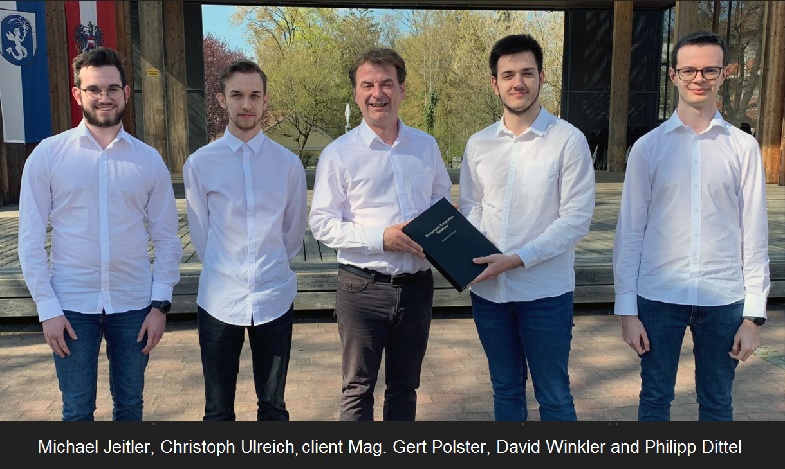 The aim was to design a database for Burgenland emigrants and a website with which this data can be entered and accessed. The high school graduates therefore developed a data model and designed their database accordingly. The database facilitates genealogical research for Burgenländers. With it, it is possible to call up the data of the emigrants from the database using various searches, for example people or place searches. It also offers the possibility of adding new emigrants to the database. The diploma thesis was also successfully submitted to the "Burgenland Foundation Theodor Kery", which can support the further maintenance and further development of the "Burgenland Emigration Database." HTL Pinkafeld is "the" school of technology in southern Burgenland, with around 1,350 pupils and more than 150 teachers; it is also the largest vocational school in Burgenland. HTL are the initials for Höheren technischen Lehranstalt = Higher Technical School. Lake Neusiedl Has Lowest Water Level Since 1965: In mid-July, Lake Neusiedl reached its lowest water level since records began in 1965 (the Lake last dried up completely in 1865). For this time of year, it is 20 centimeters (~7.9 inches) below normal, at 115.04 meters above the Adriatic Sea. The previous recorded low was in 2003 and the lake only really recovered in 2006. Since 2020, the water level has been declining again. In the bay near Rust, a sludge extractor has been working to remove mud from the navigation channels so boat traffic from and to its docks can continue. However, with a heat wave in Europe (Burgenland mid-month highs approached 100 degrees), the Lake level is expected to continue to fall. The combination of low water level and high atmospheric temperatures is also causing the Lake to warm, and some kill-off of temperature-sensitive fish species has been occurring. In a related situation, the shallow Zicksee (near Sankt Andrä in the Neusiedl district) has shrunk to the point that a rescue operation was carried out to move fish from its now ankle-deep, muddy water to other, deeper ponds. It is expected to go completely dry by month-end. The condition of these Lakes and the falling groundwater levels caused Governor Hans Peter Doskozil to criticize the ongoing irrigation occurring in the Seewinkel. Over 5,000 wells have been approved and seed corn fields are irrigated in midday heat. "...there will certainly have to be measures," said Doskozil. The Vice President of the Burgenland Chamber of Agriculture, Werner Falb-Meixner, noted that the harvests of wheat, barley and potatoes have already been completed but the seed corn still requires irrigation to secure the yield. "Pioneer is in Austria because we can guarantee corresponding quantities." One solution, refilling the Lakes and water table with water from the Hungarian Moson Danube via the Einser canal system was planned, but there were concerns about that as Hungary is experiencing financial problems and had put a halt to large expenditures. Bringing in water was to implemented jointly with Hungary and was loosely tied to a large-scale construction project on the Hungarian portion of the Lake near Fertörakos. That project, which was halted after the land clearing and grading, was intended to include a marina with 850 berths, a hotel complex with 100 rooms, an 800-space, multi-story parking deck, plus camping, sports and entertainment facilities. Nonetheless, on July 22nd, Governor Hans Peter Doskozil and Hungarian Foreign Minister Peter Szijjarto signed a joint declaration of intent to intensify cooperation on energy and climate. An expansion of the Moson-Danube irrigation canal from Janossomorja to the Burgenland state border was specifically addressed. "The common goal is to stabilize the water level in the Natural Area Seewinkel – Lake Neusiedl and to secure the sensitive ecosystem of the region in the long term," explained Doskozil. The declaration also includes a clear commitment to further develop the Fertö-Neusiedler See region and to strengthen cooperation in tourism, plus it addressed initiatives in the fields of infrastructure, energy, environment, climate and cross-border public transport and mobility. 60th Picnic of the Burgenländers Abroad in Moschendorf: On Sunday, July 3rd, the BG's 60th Picnic of the Burgenland Austrians Abroad took place in the Wine Museum in Moschendorf. The festival began with an ecumenical service and the following brunch was musically accompanied by the "50er Musi." Many visitors from the US came, including the current two Miss Burgenlands New York. Of course, the old and new BG Presidents, Walter Dujmovits and Eduard Nicka, were in attendance. "Above all, [the picnic] is about giving the emigrated Burgenländers in America the feeling that they will not be forgotten," said Nicka. Cool drinks and good cuisine delighted the many visitors and the celebration continued into the afternoon where many new contacts and acquaintances were made. 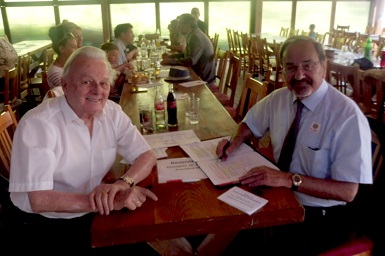 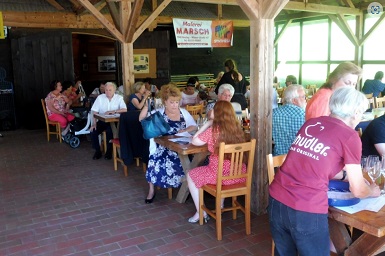 New Record Transcriptions: Transcriptions for many Burgenland vital records (church and/or civil) have been available for some time. In particular, FamilySearch has transcribed essentially all of the Catholic birth records for years ~1828 to 1895, as well as a few marriage and death records from that time. Likewise, GenTeam has provided transcriptions for a few Burgenland villages, as has our own Burgenland Bunch. If we are speaking in generalities, the Lutheran records were historically less-likely to be transcribed, though that has changed in recent years as FamilySearch has added transcriptions for most of the Lutheran birth records. A recent discovery is that FamilySearch has begun to transcribe both Catholic and Lutheran marriage and death records for villages in Burgenland, though it is unclear at this time whether they intend to transcribe all such records. You can discover whether transcriptions are available for your villages of interest by calling up the record images from the BB "FS Records" page and observing whether transcribed data appear below the images. If so, you can use the FamilySearch index “Search” feature to discover family records. As always, you should expect errors in transcribed records, as these are always just one person’s interpretation of what the original handwriting says. In additions, these transcriptions usually come from the “duplicate” records that were sent to the Hungarian government and errors could creep in during this copy process. Further, the priest or minister provided their own interpretive spelling of names in their original records, as well as made the occasional outright error. Another record set often of interest to Burgenland researchers are those for Vienna-area Catholic parishes. Many Burgenländers went to the Vienna area to find work... but they also married and had children there. Some of these records made their way back to the Burgenland records as “returns” claiming home rights... but those are mostly in the untranscribed civil records so cannot be searched. For some time, GenTeam has provided a partial index of the Vienna-area Catholic records. Quite recently, Ancestry.com has added a more-extensive index for these records, increasing our ability to search. So, have fun discovering more about your family! Großpetersdorf Records: BB staff member Patrick Kovacs had previously provided transcriptions of marriage records from the Großpetersdorf Catholic records for the years 1828 to 1895 and from the Großpetersdorf civil recording district records for the years 1895 to 1920. He had now provided an additional transcription of marriage records from the Großpetersdorf Catholic records for the years 1797 to 1827. This new transcription bridges the gap between the Matriken.at records (1711-1796) and the FamilySearch records (1828-1895). In addition, for the prior 1828-1895 transcription, he added parental names for both bride and groom for years 1843-1852 and 1860-1863. These names were not included in the duplicate books (but were in the original books). You can access all of these records here: GrosspetersdorfRecords.htm. Copyright of all remain with Patrick Kovacs. Takacs/Milkovits Family Tree: Frank Steurer, of Georgia, wrote to me saying, "I've been working with Steve Geosits and have been able to trace my grandparents (Takacs & Milkovits/Thyebo) all the way back to the 1600`s. Most of it can be found on FamilySearch under Francis Steurer. It is a work in progress - still a few problems I've yet to solve. It is, though, quite a large file with over a thousand people that I have vetted. It may be of some help to others trying to find their way through dark." His grandmother, Maria Takacs, was born in Edlitz im Burgenland in 1882, and his father, Alois Steurer, was born in 1914 in Krumbach, which is just 5 miles into Lower Austria where the Oberwart and Oberpullendorf districts meet. Frank asked whether it would be useful to mail a printed copy to me. However, I demurred, saying "The BB does not have a direct way to make family trees accessible to members. However, I can put a note in the newsletter about your project and, 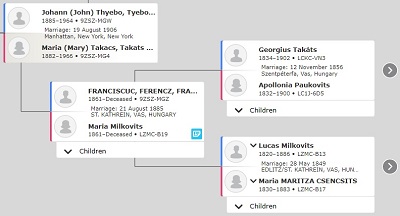 if you wish,
include your email address so interested people can contact you. I can also add (to that note and to your BB
member entry) a link to your FamilySearch tree, though I’d probably use starting point
familysearch.org/pedigree/9ZSZ-MG4 so members
can go directly to where your Burgenland-related family starts. If we do it this way, there is no need to share a file with
anyone, as they can access it online." if you wish,
include your email address so interested people can contact you. I can also add (to that note and to your BB
member entry) a link to your FamilySearch tree, though I’d probably use starting point
familysearch.org/pedigree/9ZSZ-MG4 so members
can go directly to where your Burgenland-related family starts. If we do it this way, there is no need to share a file with
anyone, as they can access it online."Frank was agreeable to this approach, so here it is. If you wish to talk with Frank, email him at gfgc@att.net and you can go from there. Gustav Rehberger Bike Path Station: I received a note from Pamela Demme this past month wherein she passed along an email from Heinz Bundschuh saying a 12-station nature trail and bike path has opened that honors Rehberger with a placard. Pamela was the last wife of Gustav, who was an artist from Riedlingsdorf that became successful in America. 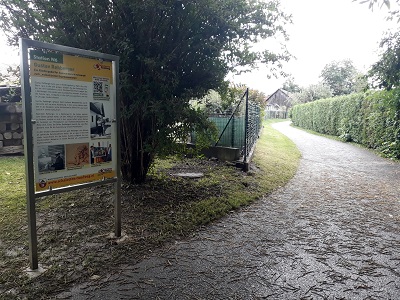 Heinz
Bundschuh wrote that "The circular route opened on Sunday [July 3rd]. The route consists of 12 stations and
station N6 is dedicated to Gustav. It is located at the back of his former family home, which no longer exists. The station
is also on a bike path, so many people can read Gustav's life story. There is also a website that provides more information
about Gustav. People can find the site with a QR code written on the sign." Heinz
Bundschuh wrote that "The circular route opened on Sunday [July 3rd]. The route consists of 12 stations and
station N6 is dedicated to Gustav. It is located at the back of his former family home, which no longer exists. The station
is also on a bike path, so many people can read Gustav's life story. There is also a website that provides more information
about Gustav. People can find the site with a QR code written on the sign."If interested, you can directly access that website via link: https://schalotten-rundweg.at/index.php/n6-gustav-rehberger. It is titled: "N6 Gustav Rehberger - Schalotten Rundweg: Eine Wanderung durch das Land der Zwiefler," which translates to "N6 Gustav Rehberger - Shallot Circular Trail: A hike through the land of doubters."  While I do not know for sure why
the trail is named for an onion... I can only speculate that shallots are grown in the area or that an onion is symbolic of
the three rings in the complete trail system, I can see that they use the onion symbol on each placard (to the right is an
enlargement of that section of the display). While I do not know for sure why
the trail is named for an onion... I can only speculate that shallots are grown in the area or that an onion is symbolic of
the three rings in the complete trail system, I can see that they use the onion symbol on each placard (to the right is an
enlargement of that section of the display).I also do not know (completely) why the trail is subtitled "A hike through the land of doubters." However the people of Riedlingsdorf have been called "Zwiefler" (doubters) by their neighbors for a long time... it is why they are called that that I do not know! So, if any of you readers have a definitively explanation of either of these word choices, please share... I'll pass it along to the readership in the next newsletter. As for the trail station honoring Rehberger, I provide a larger image below along with a translation to English.
|
||
2) HISTORICAL BB NEWSLETTER ARTICLES Editor: This is part of our series designed to recycle interesting articles from the BB Newsletters of 10 years ago. Back then, I wrote an article about US population racial breakouts. While I do not have new data at hand to compare to that of 10 years ago (and obtaining such might be a good idea), for now I'll let you have a second look at what those data said and to ponder what political movements of the last 10 years might be tied to them. THE BURGENLAND BUNCH NEWS No. 223 July 31, 2012 MILITARY SERVICE IN BURGENLAND Arlene Huss of Lancaster, PA, wrote to say: Hi Tom, so glad you got to the Nationality Rooms at the University of Pittsburgh. That's my alma mater and those rooms to me are one of America's most underrated, underexposed places to visit. In the item relating to reasons Burgenländers emigrated one referred to a 12-year military commitment. Do you know
who mandated that and to whom it applied? Family tradition says my grandfather left Jánossomorja because he didn't want to
serve in the military but he was married and had children at that point, which may or may not have made any difference.
Despite the statement above of “universal conscription,” only about 1 in 5 eligible males were eventually conscripted
into active service. However, there was nothing to say you had to be conscripted at 19… so the unconscripted never knew when
they might get called into active service. Thus it was hard to start a life with that uncertainty hanging over you. Worse
yet, if you were not eventually conscripted into active service, you were given 4 weeks training and placed directly in the
reserves, which turned out to be a disaster for these undertrained men when they were sucked into an active war. |
||
3) ETHNIC EVENTS LEHIGH VALLEY, PA Thursday–Sunday, Aug 4–14: Musikfest in Bethlehem. Info: www.musikfest.org Sunday, Aug 7: Parish Picnic at St. Peter’s Roman Catholic Church in Coplay. Polka music by the Emil Schanta Band. Info: www.stpeterchurchcoplay.com Friday, Aug 12: Kermit Ohlinger at the Reading Liederkranz. Info: www.readingliederkranz.com Sunday, Aug 14: The Steelworkers at the Coplay Sängerbund. Info: www.coplaysaengerbund.com Friday, Aug 19: Josef Kroboth Orchestra at the Evergreen Heimatbund in Fleetwood. Info: www.evergreenclub.org Sunday, Aug 21: Emil Schanta Band at the Coplay Sängerbund. Info: www.coplaysaengerbund.com Sunday, Aug 21: German-American Day at the Reading Liederkranz. Entertainment by Bavarski, the RLK Singers, and the Edelweiss Schuhplattlers. Info: www.readingliederkranz.com Friday, Aug 26: Kermit Ohlinger at the Reading Liederkranz. Info: www.readingliederkranz.com Friday–Sunday, Aug 26–28: Coplay Community Days at Coplay Community Park. Polka music on Sunday by the Josef Kroboth Orchestra. Info: www.facebook.com/CoplayCommunityDaysFestival/ Saturday, Aug. 27: Maria & John at the Evergreen Heimatbund in Fleetwood. Info: www.evergreenclub.org NEW BRITAIN, CT Friday-Sunday, 1-8 pm: Biergarten is open. Austrian Donau Club, 545 Arch Street. ST. LOUIS, MO (none) UPPER MIDWEST (none) |
||
4) BURGENLAND EMIGRANT OBITUARIES John Pieler  John "Hans" Pieler, 95, of Bridgman,
Michigan, passed away on July 12, 2022 at Spectrum Health Lakeland. Hans was born on June 28, 1927 in Balf (Wolfs), Hungary,
the son of the late Johann and Theresia (Schmidt) Pieler. On February 20, 1960, he married Wilma Fuchs in Germany and they
shared 62 years together. In November of 1960, they immigrated to the United States where they became citizens in 1965. John "Hans" Pieler, 95, of Bridgman,
Michigan, passed away on July 12, 2022 at Spectrum Health Lakeland. Hans was born on June 28, 1927 in Balf (Wolfs), Hungary,
the son of the late Johann and Theresia (Schmidt) Pieler. On February 20, 1960, he married Wilma Fuchs in Germany and they
shared 62 years together. In November of 1960, they immigrated to the United States where they became citizens in 1965.Hans was a master printer by trade in Germany and brought his talents to Argus Press in Chicago. In 1974 they moved to Bridgman where they could garden like in the 'old country'. Hans retired as a Pressman at Burch Printing in 1992. He was a member of St. Paul's Lutheran Church and the St. Joe Kicker's Club. Hans enjoyed camping, fishing, gardening, wine making, and his grandson. Survivors include his wife: Wilma; daughter: Christine Dudeck; and a grandson: Phillip Dudeck. Hans was also preceded in death by his brothers: Otto Pieler and Herman Pieler. A funeral service will be held at 11 AM on Monday, July 18, 2022 at Pike Funeral and Cremation Services, Boyd Chapel, 9191 Red Arrow Hwy, Bridgman. Friends may meet with the family from 10 – 11 AM on Monday at the funeral home, prior to the service. Burial will be in Graceland Cemetery, Bridgman. Memorial contributions may be given to St. Paul's Lutheran Church, 2673 W. John Beers Road, Stevensville, MI 49127. Online condolences accepted at www.PikeFH.com. To order memorial trees or send flowers to the family in memory of John "Hans" Pieler, please visit our flower store. Published by Pike Funeral and Cremation Services on Jul. 13, 2022. |
||
| END OF NEWSLETTER (Even good things must end!) |
||
|
Burgenland Bunch Newsletter, copyright © 2022 by The Burgenland Bunch |
 News
News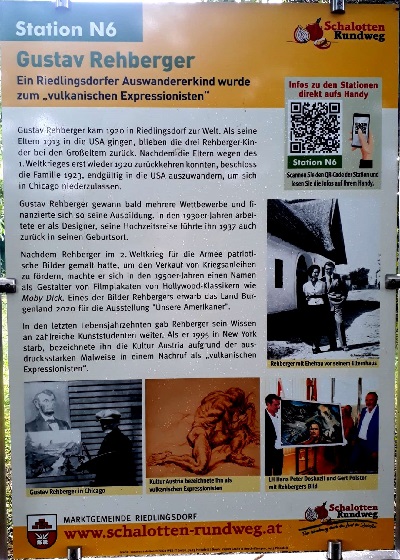
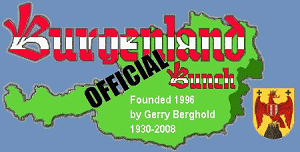 The
Facebook Bunch (from Vanessa Sandhu):
The
Facebook Bunch (from Vanessa Sandhu): Update
for book "The Burgenländer Emigration to America": Here is this month's update on purchases of the English issue of
the 3rd edition of Dr. Walter Dujmovits' book "Die Amerika-Wanderung Der Burgenländer."
Update
for book "The Burgenländer Emigration to America": Here is this month's update on purchases of the English issue of
the 3rd edition of Dr. Walter Dujmovits' book "Die Amerika-Wanderung Der Burgenländer."
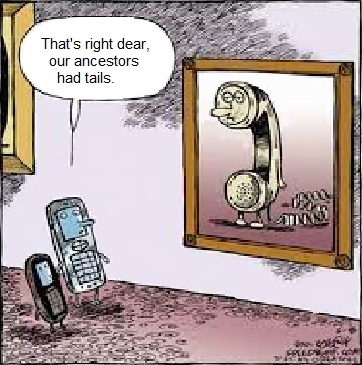
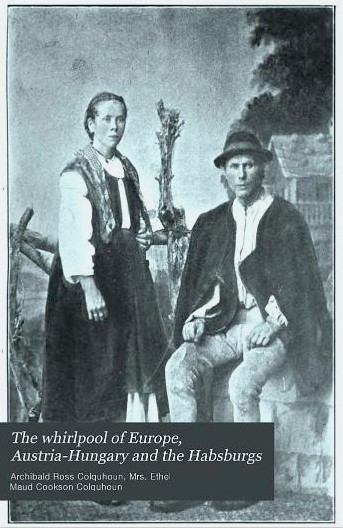 The book I quoted from, The Whirlpool of Europe:
Austria-Hungary and the Habsburgs, is available for free as an ebook on Google and was published in 1914. The authors
were British and the text was clearly intended for British readers.
The book I quoted from, The Whirlpool of Europe:
Austria-Hungary and the Habsburgs, is available for free as an ebook on Google and was published in 1914. The authors
were British and the text was clearly intended for British readers.